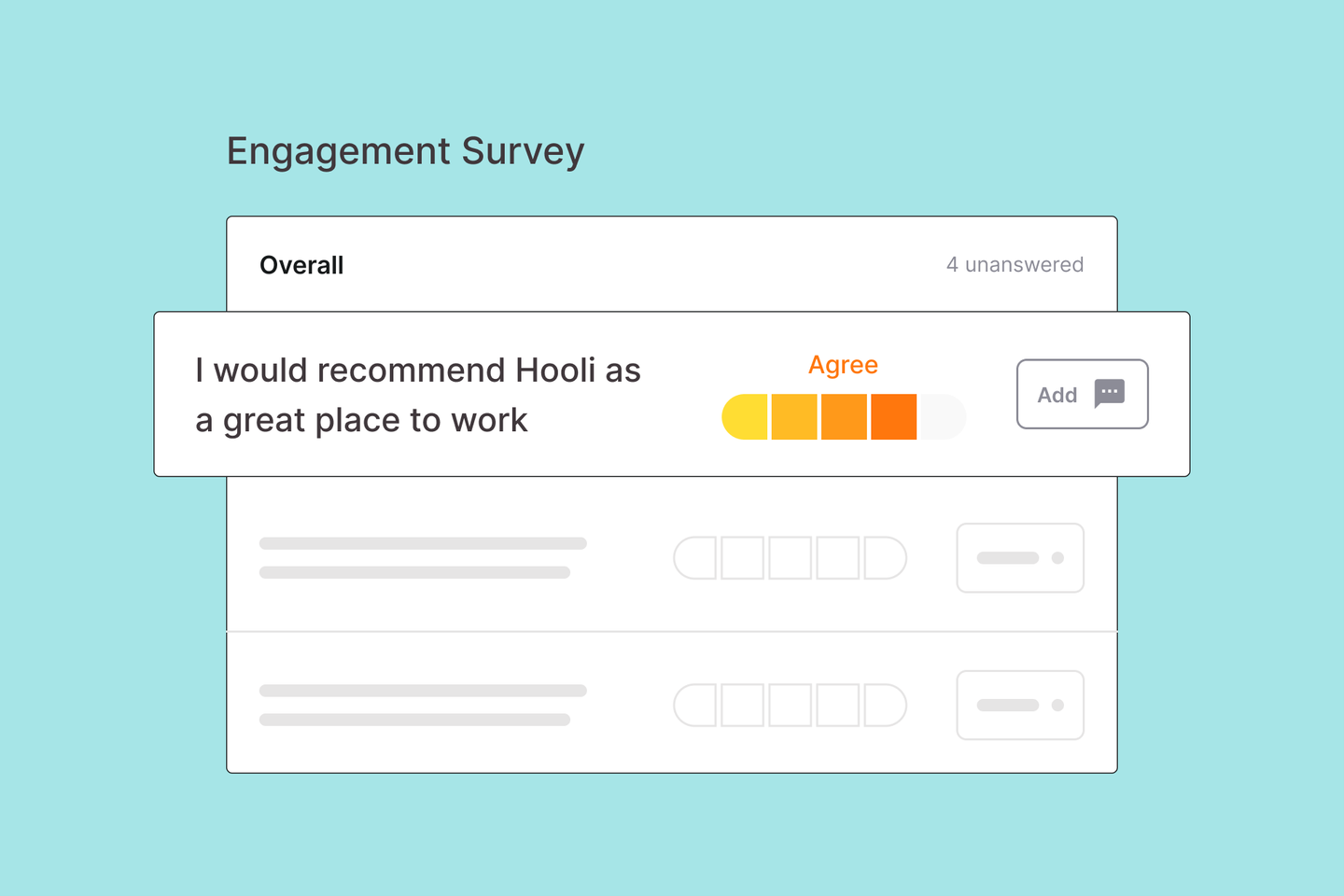The link between leadership and employee engagement

We all intuitively know that there is a link between leadership and culture. Leadership has a significant impact on the morale and feelings of employees. We also know that leadership drives retention. As the cornerstone of engagement – everything else depends on it.
When I’m talking about the connection between leadership and company culture, there are three things that I find particularly interesting:
- If people’s perception of their leaders starts to decline, you can expect a quick ~10% drop in overall engagement levels.
- This decline can take a long time to turn around.
- Early indicators can show you when leadership perceptions are starting to decline or are on the rise. These can help you address an issue before it becomes a larger problem.
Nothing makes engagement fall faster than when people lose confidence in leadership
It’s rare to see any single factor have a more substantial and rapid impact on employee engagement than leadership perception. If there’s a perception that leadership is not connected to your people, you can generally expect a quick double-digit drop in engagement.
It may take just days for people’s perception of leadership to fall, but it can take three to six months for these perceptions to recover (even if immediate action is taken). This is similar across every industry – leaders need to re-establish trust, and that requires people to see their leaders in various situations.
Whilst this is the general pattern, there are some interesting situations when engagement can go up rapidly, which may seem counterintuitive at first. One of the most profound things I've seen is when engagement rises despite a company encountering bad or challenging events. When we dig into the data, we often find that the leader hasn’t been very communicative when things were going well, but they start using more honest communication and are more transparent when times are bad. Engagement scores increase because people are impressed that their leaders communicate and tell them what’s happening.
You can detect changes in leadership perceptions by using specific indicators
Leading indicators can show a decline or increase in how leaders are perceived. These can be found in the answers that people give in employee feedback surveys. In a typical engagement survey, there are perhaps four to six questions that directly ask about the senior strategic leaders of the organization. Then, there are another 25 to 30 questions in diagnostic feedback surveys that focus on the broader leaders of the organization.
One of the most telling engagement survey questions on leadership perceptions is: “Do your leaders demonstrate that people are important to the organization?” If the answer to this is negative (and increasing), it’s a strong predictor that churn rates will increase, and engagement scores may drop.
When you see a quick drop in leadership questions like this, the overall engagement score is likely to fall rapidly and substantially by 10% or more. While it can be hard to predict the leadership disasters that will trigger this kind of response, you can often see clues in text analytics. Looking at the extent that people are qualitatively forgiving can often provide clues as to whether a breaking point is on the horizon.

For scores to increase, people need to feel connected to the organization and that their leaders are strong. The question that can indicate that leadership perceptions and connection is falling is: “The leaders at [Company] have communicated a vision that motivates me.” – a statement that assesses the ability of leadership to communicate a vision that resonates with people.
We often see a positive connection when a new leader comes in, and they can quickly and effectively communicate their vision. Confidence rises when people feel connected to the vision and aligned with the organization's direction, and employees begin to believe they're on a winning team. This is one of the fastest ways companies can boost their engagement scores.
Leadership has a significant impact on overall engagement in any organization. If perceptions are negative, it can be sudden and drastic, and it can take time to turn around. By focusing on leading indicators in your employee feedback data, you can identify potential problems and transform how your people perceive leadership.
The top five things associated with strong leadership
We know that good leadership is associated with higher levels of engagement, less churn, and higher Glassdoor ratings. However, what are the specific things that good leadership is associated with inside an organization?
To understand this, we analyzed data from over 200,000 people who rated leadership and their feelings about other workplace factors. From this, we could determine the top five things linked to good leadership.
When employees feel positively about leadership, they are also more likely to...
- Recommend their company as a great place to work
- Believe they can make a positive difference
- Go above and beyond for their company
- Feel there is open and honest two-way communication
- Believe that the right people are rewarded and recognized
You can't manage what you can't measure

One thing is clear: the best way to know how well leadership is doing at your company is to ask your employees how they're feeling. If your company isn't already holding employee engagement surveys, now is a good time to start. With an employee experience platform like Culture Amp, you can access 30+ survey templates with science-backed questions to help you understand how your people feel about engagement, inclusion, and more. Plus, our benchmarks make it easy for you to make sense of your company's progress and how your scores stack up with other companies in your space.







